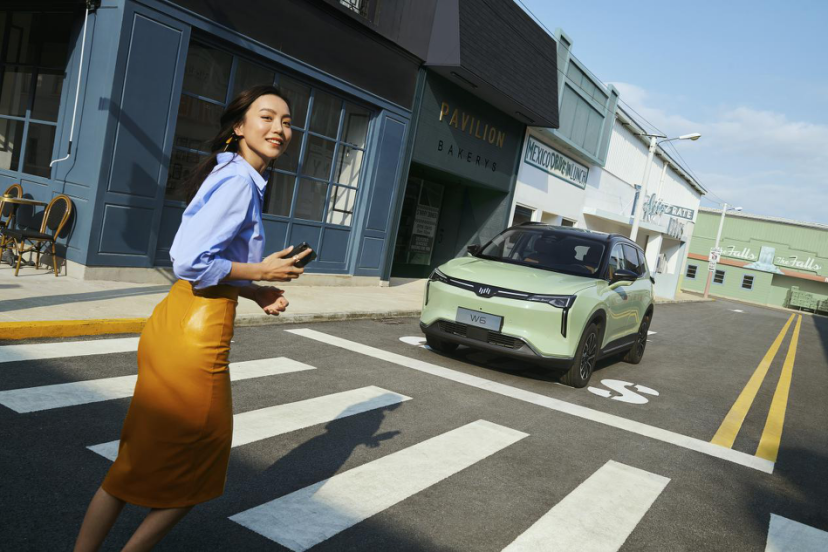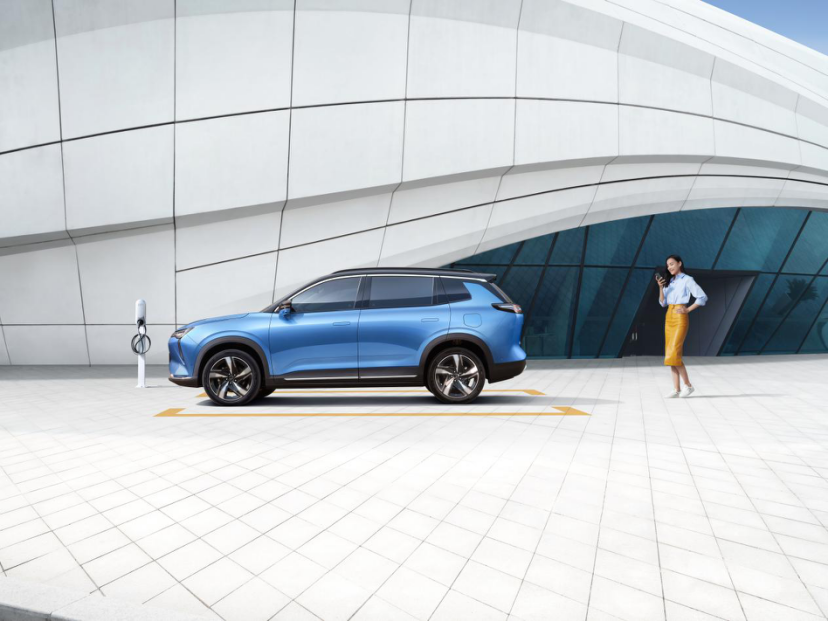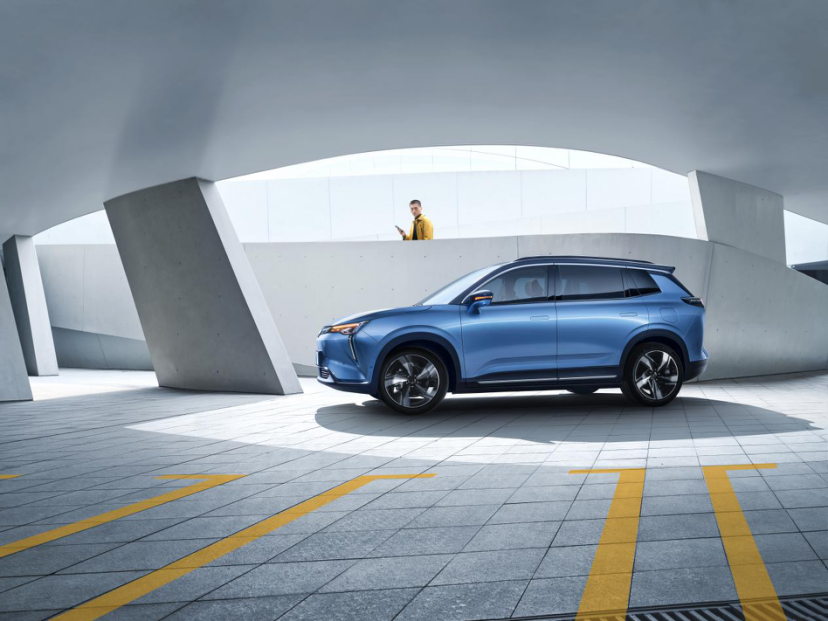This article was reproduced from the Autocarweekly subscription account.
Author: Xue Yafu
As a private child abandoned by ACW in Guangzhou, I rarely go back to the company for meetings. But last week, I attended a topic selection meeting, and everyone started a heated discussion on whether to buy a pure electric car or a fuel car. The current ACW male model, Chao Chao, was the first to jump out and say, “Why not buy a performance car if you have the money?”
Teacher Car: “I hope I can reach my destination while lying down, not in a performance car sweating all over.”

People kept talking, and I hid in the corner, not because my skin was too dark and was naturally ignored (just happened that the wall was dark), but because I knew that similar viewpoints and debates were no longer fresh, especially with the same car purchase budget. Unique electric cars and oil cars of the same price can always attract endless arguments.
The intelligent driving tags carried by smart cars are ushering in their spring, while the passionate sentiment of performance cars is also attractive. The former is the future, and the latter is the present, and everyone will make their own choices. From my personal point of view: I accept new things, but the premise is that I hope technology is here to improve my shortcomings, not BB in the field that I am already good at.

So when the test drive invitation of the WM W6 was handed to me, I was attracted by the concept of “being able to park without driving”. The combination of the two is exactly the topic I want to talk about: the story of autonomous driving is played almost every day, but there are not many cases that can start from real-life scenarios and use technology to solve pain points. Ideas are always easy to come up with, but it’s only great when they are implemented.
What you can see but can’t touch is PPT, what you can use is technology
At the current stage, it is indeed very difficult to fully trust “autonomous driving”.

On the one hand, objective and necessary conditions such as algorithms, computing power, and hardware devices are still growing, and more importantly, there are many variables in the current traffic situation. Factors such as accident liability division, laws and regulations, and technical reliability are all in uncontrollable risks.
Instead of launching a comprehensive autonomous driving system from the beginning, it is better to gradually transfer some scenes involving autonomous driving to current accessible living scenarios, allowing current users to perceive the power of future technology in the most grounded way, which is a good idea.
In fact, this is also one of the highlights of WM W6’s “unmanned driving” solution.”Autonomous parking” is the autonomous driving solution for daily life scenarios for the WM W6. In practical intelligent experience, what the WM W6 can do is as follows: when you are in a hurry to catch a plane and park your car at the closest place to the elevator, the WM W6 will automatically enter the parking lot in an unmanned state, search for and park in an available parking space. The same goes for picking up the car. When you come back from a business trip and come back to where you originally left, you can remotely operate your car with your smartphone, and the vehicle will still automatically drive out of the parking lot in an unmanned state and quietly come to the owner’s side.

Compared with products at the same level, the “autopark assist” of XPeng and Tesla is almost the same, just that the car seeks out the parking space by itself, and when the car owner activates the parking function, the vehicle starts the automatic parking mode. The experience only has differences in efficiency, operating experience, and success rate.
In terms of detailed operating logic, most of them correspond to parking scenarios with fixed starting points and endpoints, such as homes or companies. Just lead the WM W6 to learn the parking route once, and the system will automatically memorize the driving trajectory and the preset position of the parking space through 5 77 GHz millimeter-wave radar, 2 high-definition front cameras, 4 high-definition surround-view cameras, 12 ultrasonic radar sensors, both locally and in the cloud, to achieve automatic parking in an unmanned state. When you summon it, it can also avoid obstacles, dodge pedestrians, and automatically pick you up.
In terms of hardware, the WM W6 adopts a new electronic and electrical architecture, equipped with a Qualcomm 8155 chip, 5G baseband, and a self-developed autonomous driving domain controller. The car is equipped with 24 sensors, including 5 millimeter-wave radar, 7 cameras, and 12 ultrasonic radar sensors.
In addition, WM and Baidu began cooperation earlier. As important strategic investors, the WM W6 is based on the Baidu Apollo platform and adopts a new electronic and electrical architecture, which will be the first to be equipped with the world’s first “cloud-based intelligent unmanned parking system” in specific scenarios with L4-level autonomous driving capability, leading other three new carmakers in technology. It is worth mentioning that its system’s comprehensive “cloud computing power” has reached a million-level TOPS level (computing power is the latest measure of modern intelligent electric vehicles). Referring to the supercomputing platform used by NIO with four NVIDIA DRIVE Orin chips, its comprehensive computing power is 1016 TOPS, while Tesla HW3 chip computing power is 144 TOPS.When there are enough fixed facilities, a fixed route, and sufficient data, this system can achieve unmanned driving with minimal computing power. LIDAR is not necessary, as seen in relatively closed parking lots. Once combined with high-precision maps, the system can achieve a continuous and smooth similar experience. (So it is necessary to have enough users.)
Of course, looking at this feature alone, it can only perfect a part of the living scene and does not explain how much pain points it solves for travel. However, as a brand that advocates “technology for all”, WM’s low-priced high-tech can bring some stimulation to new business models, such as automatic driving software subscriptions. Imagine, not all electric cars can meet the conditions for automatic driving, but once data is complete, it can be delivered via OTA to products with lower threshold to achieve similar functions, which is a good thing for some consumers.
It used to be me driving, now the car accompanies me
As someone who does not oppose new things, my stance has always been that I do not want vehicles to interfere too much with autonomous behavior. The instant drop in speed from 120km/h to 60km/h during the process of merging from the main road to the side road by a certain brand’s assisted driving system made me feel extremely uncomfortable. In city roads with many variables, smart cars should show more tolerance. It is impossible to ask the car owner to fully trust the machine at this stage, and there is no need for it.
Rather than highly integrating software and hardware, more tolerance should be left to the driver. The purpose of intelligence is to improve safety. If emergency braking and sudden lane changes can be handled well, it’s more meaningful.
From my experience, the WM W6 is more suitable for “conservative people” like me when it comes to driving. You can see me as Will Smith in the movie “I, Robot”. I can accept it, but I hope I can control everything.
Therefore, I don’t want to adapt from scratch when driving a new car. When I first sat in the driver’s seat of the WM W6, the operational logic of all its functions was almost similar to that of a traditional gasoline car. Both novices and experts can easily get started, which gave me a good impression.The second aspect worth praising is its throttle setting. During initial start-up, when you are still wondering if it will be as sensitive in the first half as other electric cars on the market, resulting in jerky driving in urban areas. However, the Weima W6 is similar to traditional German petrol cars, with a gentle and harmless first half, and vehicles will gradually accelerate no matter how much or how little the gas is applied, even if suddenly released by a girl, there is no need to worry about sudden acceleration.
When the vehicle speed exceeds 60 kilometers per hour, the acceleration feeling returns to the conventional electric car feeling, that is, pedal to the metal, with a smooth and easy-to-control power feeling. At the same time, it is still similar to some petrol cars. When switching from low speed to high speed, there is an inexplicable downshifting ritual, perhaps a special ritual left for passengers. The benefit of this is that even if the kinetic energy recovery is at a medium or weak level, passengers in the rear seat will not feel dizzy. (Just for this detail, some traditional car companies are really not as good as Weima).
With a deliberately thick and resilient style of chassis tuning, on the test drive route, there was a particularly bad construction road section. No matter what impact the vehicle suffered from the road, the chassis feedback remained consistent. This is the benefit of the low center of gravity brought by the battery being placed at the bottom. It allows engineers to achieve balance more easily by adjusting the suspension and shock absorption system through four-wheel weight distribution. In the past, traditional petrol cars needed a lot of time and road tests to achieve relatively average values, so electric cars have their natural advantages in comfort.
I always used to hear friends say that once you buy an electric car, it’s hard to go back. First, the cost of using a car drops immediately, and second, the driving experience is something that traditional petrol cars cannot provide.
Regarding this evaluation, my view has always been half-open. The minimum standard to make the latter possible should be at least a Weima W6, which is easy to drive and powerful, and also has a personal voice assistant that can perform most of the vehicle’s functions. When bored or tired, all functions can be accessed and controlled by waking up the voice assistant, and it has even become a habit when driving any new car nowadays.
It used to be you driving the car, now the car accompanies you. Changing the perspective of experiencing life is also great.
Of course, there is also a premise that the car’s system must say goodbye to the awkwardness of “saying hello” before receiving any instructions like in the past. The Weima W6 can have continuous natural conversations and multiple free interruptions within 15 seconds, which is also considered to be at the upper level of the current car system technology.
ConclusionIn terms of driving experience, WM Motor has advantages that traditional car companies are hard to catch up with in a short time. For example, the Michelin Primacy 4 Quietness tire with a size of 225/55 R18 is enough to be generous (this set of tires has good wet handling and quietness), and its configuration level is also comparable to that of joint venture models priced at 300,000 yuan. From a rational point of view, it is easy to impress people.
However, for the automotive industry that emphasizes manufacturing heritage and experience, WM Motor still has room for improvement in some small details. For example, in terms of interior materials, storage space, and the damping of knobs and dials is slightly blurry, as well as the coordination between people and cars during steering. WM Motor needs to spend more time perfecting these issues in the production process.
In fact, as long as WM Motor controls the details well, objectively speaking, WM Motor still has a great opportunity. In the six years since the brand was born, WM Motor has launched three models, including the WM EX5, which has more than 50,000 owners. This model has also been the best-selling model among new car manufacturers for 17 consecutive months.
Although there is still a slight gap compared to NIO, which has produced 100,000 vehicles, WM Motor and the other three new car makers were born in almost the same period of time. Everyone needs time to continue to polish their products. What’s great about WM Motor is that it never sells “futures”. Three real products are presented to consumers, and soon, they will add one more sedan product.
In any case, as long as WM Motor can continue to tell the story well, like such a real new car brand, there is only one sentence in the end: a good horse is not afraid of a long road, right?
This article is a translation by ChatGPT of a Chinese report from 42HOW. If you have any questions about it, please email bd@42how.com.